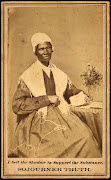
In Exodus 20 of the Hebrew Torah, the Christian Old Testament, Moses is given the Decalogue, The Ten Commandments, on Mount Sinai. In a later episode of the story, in Exodus 32, Moses comes down from the mountain and finds the people engaged in celebratory rituals ("the people sat down to eat and drink, and rose up to revel") around a golden calf that the high priest Aaron has made at their request. So, it's interesting in this context that the first seven verses of Exodus 20 concern issues raised by monotheism and by the fact that YHWH is (sort of at this point) invisible. The second commandment explicitly forbids making "graven images" with long-lasting generational curses and blessings connected with the breaking or keeping of this command.
While we don't think we worship idols in the 21st century, this commandment is a surprisingly difficult one to keep. Living as we do in physical bodies, we are moved by sensory images, whether in visual art or literature. Given this physicality, it is interesting that idolatry and sexuality tend to be juxtaposed, in both the Hebrew Bible and the Christian New Testament. Theory, from Plato to Baudrillard, deals with an idea epitomized here. Is there an "ideal" unseen presence? Do the "forms" exist somewhere in the mind of a supreme deity, only to be imperfectly copied by artists and poets? Or, as postmodernists posit, does the copy become more real--hyperreal--than what we only imagine to be the original? Is Disneyland more real than American society, to use Baudrillard's example?
While we don't think we worship idols in the 21st century, this commandment is a surprisingly difficult one to keep. Living as we do in physical bodies, we are moved by sensory images, whether in visual art or literature. Given this physicality, it is interesting that idolatry and sexuality tend to be juxtaposed, in both the Hebrew Bible and the Christian New Testament. Theory, from Plato to Baudrillard, deals with an idea epitomized here. Is there an "ideal" unseen presence? Do the "forms" exist somewhere in the mind of a supreme deity, only to be imperfectly copied by artists and poets? Or, as postmodernists posit, does the copy become more real--hyperreal--than what we only imagine to be the original? Is Disneyland more real than American society, to use Baudrillard's example?
I'm not talking about God, here, really. I am a Christian believer, a fact that should be disclosed. But I do realize that my own spirituality is very concrete. I like it real, incarnate. And, at the same time, I am persuaded that most of what I understand as real is socially constructed. I can only understand unseen things in this particular body, in this ever-changing time and space. Even while commanding that concrete images of gods not be made, the Exodus text anthropomorphises the unseen presence giving the commands. In one translation, Moses gets to hide in the cleft of a rock and see God's "hinder parts" as his "glory" passes by. After that, Moses's face shines so much that he has to wear a veil--this also in Exodus 34. (The shining gets mistranslated as Moses being horned at some point, and European medieval and Renaissance images of Moses sometimes have horns.)
We walk on the sharp edge of a cliff, or maybe we dance amid the breccia at the base of Sinai, as we consider the history of literary theory and criticism. I've just been reading the Baudrillard text, "From The Precession of Simulacra" on pages 1935-46 of David Richter's The Critical Tradition, in which he refers to this idea. The simulacra to which Baudrillard refers might as easily be translated idols, in some contexts to which he applies it. Symbolism relates, too. Incarnation. The Body. I wonder if it is even possible to keep anything abstract? Show rather than tell, we say. But is all pretense to clarity, all specificity, all concrete "reality" illusory, reductive reification? I will probably pair this Baudrillard text with Plato in English 387, because both texts question whether what we read represents anything but itself. This idea of the image vs. the real also relates to the Lennard Davis essay I've considered as an opening, linking it to the images of Venus de Milo and Medusa that inspired my "ideal woman" layout for this blog.
Also, this weekend, I read the Lyotard text in Richter. "Defining the Postmodern," on pages 1933-35. The concept that jumps out for me from that text is bricolage. Much more on that later--a really important concept, related to what I call JAZZ in my blurb at the top of this blog. In fact, I'll be editing that blurb to include the word bricolage. I'm going to ask students to keep a list of words they encounter in our readings--not just as a list of definitions but as a list of connotations and intertextual connections. We'll also want to generate a list of who said what--Julia Kristeva has been credited with inventing that word, intertextual--but I have found in my reading of theory that often such coinings are misattributed. More later on all these ideas.
We walk on the sharp edge of a cliff, or maybe we dance amid the breccia at the base of Sinai, as we consider the history of literary theory and criticism. I've just been reading the Baudrillard text, "From The Precession of Simulacra" on pages 1935-46 of David Richter's The Critical Tradition, in which he refers to this idea. The simulacra to which Baudrillard refers might as easily be translated idols, in some contexts to which he applies it. Symbolism relates, too. Incarnation. The Body. I wonder if it is even possible to keep anything abstract? Show rather than tell, we say. But is all pretense to clarity, all specificity, all concrete "reality" illusory, reductive reification? I will probably pair this Baudrillard text with Plato in English 387, because both texts question whether what we read represents anything but itself. This idea of the image vs. the real also relates to the Lennard Davis essay I've considered as an opening, linking it to the images of Venus de Milo and Medusa that inspired my "ideal woman" layout for this blog.
Also, this weekend, I read the Lyotard text in Richter. "Defining the Postmodern," on pages 1933-35. The concept that jumps out for me from that text is bricolage. Much more on that later--a really important concept, related to what I call JAZZ in my blurb at the top of this blog. In fact, I'll be editing that blurb to include the word bricolage. I'm going to ask students to keep a list of words they encounter in our readings--not just as a list of definitions but as a list of connotations and intertextual connections. We'll also want to generate a list of who said what--Julia Kristeva has been credited with inventing that word, intertextual--but I have found in my reading of theory that often such coinings are misattributed. More later on all these ideas.











No comments:
Post a Comment